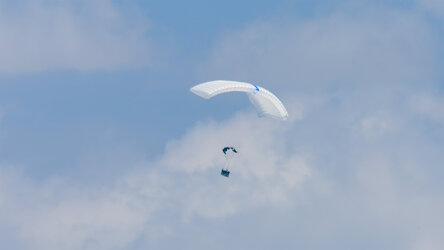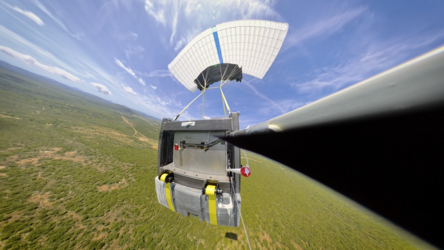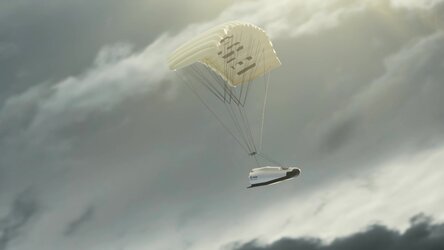Accept all cookies Accept only essential cookies See our Cookie Notice

About ESA
The European Space Agency (ESA) is Europe’s gateway to space. Its mission is to shape the development of Europe’s space capability and ensure that investment in space continues to deliver benefits to the citizens of Europe and the world.
Highlights
ESA - United space in Europe
This is ESA ESA facts Member States & Cooperating States Funding Director General Top management For Member State Delegations European vision European Space Policy ESA & EU Space Councils Responsibility & Sustainability Annual Report Calendar of meetings Corporate newsEstablishments & sites
ESA Headquarters ESA ESTEC ESA ESOC ESA ESRIN ESA EAC ESA ESAC Europe's Spaceport ESA ESEC ESA ECSAT Brussels Office Washington OfficeWorking with ESA
Business with ESA ESA Commercialisation Gateway Law at ESA Careers Cyber resilience at ESA IT at ESA Newsroom Partnerships Merchandising Licence Education Open Space Innovation Platform Integrity and Reporting Administrative Tribunal Health and SafetyMore about ESA
History ESA Historical Archives Exhibitions Publications Art & Culture ESA Merchandise Kids Diversity ESA Brand Centre ESA ChampionsLatest
Space in Member States
Find out more about space activities in our 23 Member States, and understand how ESA works together with their national agencies, institutions and organisations.
Science & Exploration
Exploring our Solar System and unlocking the secrets of the Universe
Go to topicAstronauts
Missions
Juice Euclid Webb Solar Orbiter BepiColombo Gaia ExoMars Cheops Exoplanet missions More missionsActivities
International Space Station Orion service module Gateway Concordia Caves & Pangaea BenefitsLatest
Space Safety
Protecting life and infrastructure on Earth and in orbit
Go to topicAsteroids
Asteroids and Planetary Defence Asteroid danger explained Flyeye telescope: asteroid detection Hera mission: asteroid deflection Near-Earth Object Coordination CentreSpace junk
About space debris Space debris by the numbers Space Environment Report In space refuelling, refurbishing and removingSafety from space
Clean Space ecodesign Zero Debris Technologies Space for Earth Supporting Sustainable DevelopmentApplications
Using space to benefit citizens and meet future challenges on Earth
Go to topicObserving the Earth
Observing the Earth Future EO Copernicus Meteorology Space for our climate Satellite missionsCommercialisation
ESA Commercialisation Gateway Open Space Innovation Platform Business Incubation ESA Space SolutionsLatest
Enabling & Support
Making space accessible and developing the technologies for the future
Go to topicBuilding missions
Space Engineering and Technology Test centre Laboratories Concurrent Design Facility Preparing for the future Shaping the Future Discovery and Preparation Advanced Concepts TeamSpace transportation
Space Transportation Ariane Vega Space Rider Future space transportation Boost! Europe's Spaceport Launches from Europe's Spaceport from 2012Latest

Space Rider drop test parafoil
Thank you for liking
You have already liked this page, you can only like it once!
Space Rider drop-test campaign in 2024 whereby a full-scale model of the future orbital laboratory was dropped from a helicopter to test and qualify the deployment of its parachutes, at Salto di Quirra in Sardinia, Italy.
The Space Rider project is an uncrewed laboratory about the size of two minivans that will be able to stay in orbit for up to two months. The spacecraft comes in two parts, an orbital module that supplies everything it needs to fly around our planet and a reentry module that brings Space Rider and its experiments back to Earth.
Over the course of this test campaign, that started in April and is expected to finish in autumn the teams are using a model of Space Rider that is has similar a weight distribution as the real 3000 kg reentry module. This allows the team to test the parachutes, parafoil and control winches that automatically guide the spacecraft to a soft touchdown on Earth.
Dropped from a maximum height of 3.5 km, drogue chutes deploy to help slow down the test model down to a safe speed to extract the parafoil that will allow the spacecraft to be steered to a landing strip. The enormous paraglider is 27 m long and 10 m wide – around 10 times larger than a human parafoil – is controlled from ground to test the aerodynamics involved. The test model touched down in a soft landing as planned losing altitude at a slow 12 km/h.
In autumn, the same full-scale model will undergo more flight tests, including a test of the flight control algorithm that will guide the spacecraft model on its own to land at selected landing point – no more ground control, but full automation for the next step of the test campaign. This step will further confirm the engineering and software behind this novel spacecraft.
Thales Alenia Space is the industrial lead for the tests and co-prime for the Space Rider programme. The Italian Defence supports the test activities as part of a national effort to enhance its space capabilities and international collaboration in the sector. The tests will qualify the spacecraft’s whole mission from flight, return to Earth, and landing. After the test campaigns, flight models will be authorised for manufacturing.
-
CREDIT
ESA/Thales Alenia Space -
LICENCE
ESA Standard Licence

Space Rider drop test

Space Rider drop test and windmills

Space Rider drop tests

Space Rider parafoil















 Germany
Germany
 Austria
Austria
 Belgium
Belgium
 Denmark
Denmark
 Spain
Spain
 Estonia
Estonia
 Finland
Finland
 France
France
 Greece
Greece
 Hungary
Hungary
 Ireland
Ireland
 Italy
Italy
 Luxembourg
Luxembourg
 Norway
Norway
 The Netherlands
The Netherlands
 Poland
Poland
 Portugal
Portugal
 Czechia
Czechia
 Romania
Romania
 United Kingdom
United Kingdom
 Slovenia
Slovenia
 Sweden
Sweden
 Switzerland
Switzerland
























